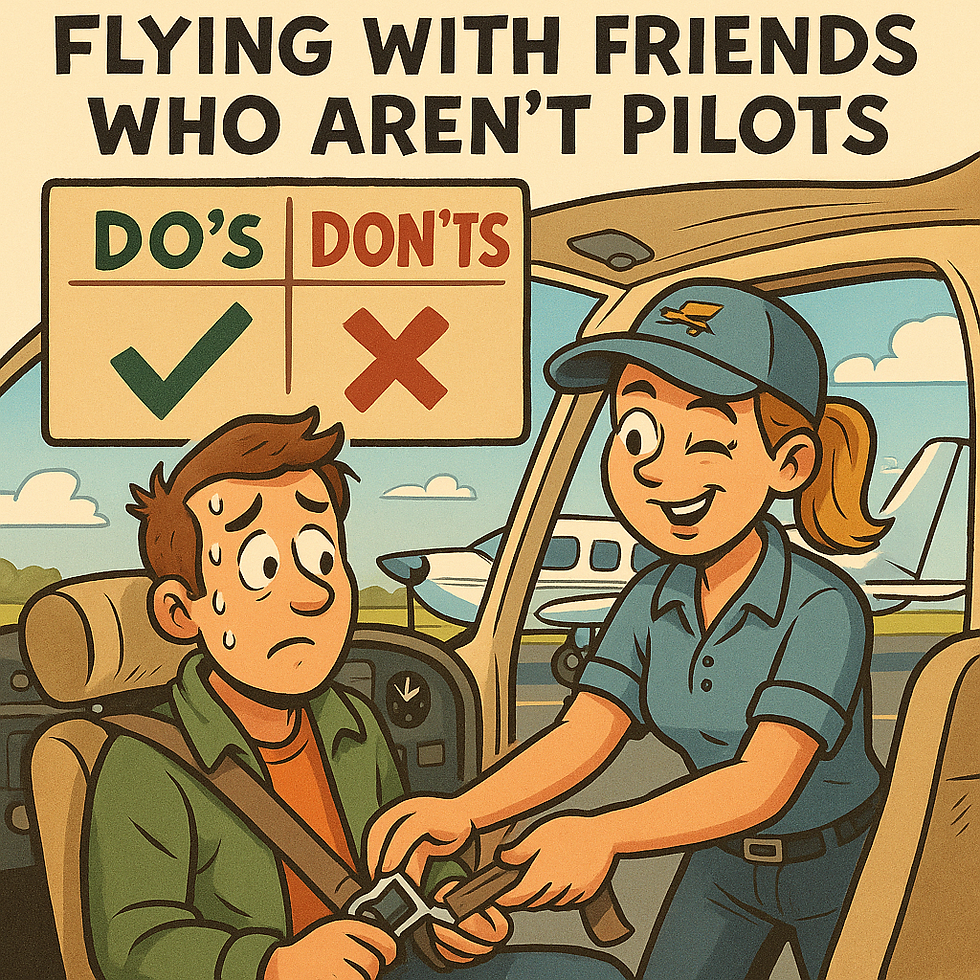Flying with your furry friends
- The Thrifty Pilot

- Oct 22, 2017
- 3 min read
Flying with pets can be a great way to take your furry (or not so furry) companion with you everywhere you decide to go. The flight can be exhilarating for you and them, however, a few things need to be thought through before you bring your pet in the sky.

Some helpful hints along the way that might save your from unnecessary hardship can include:
Make sure to control your descent to a rate that will make sure your buddy is comfortable. Remember, animals cannot clear their ears like we can so ensuring that our rate of descent is maintained and slow will ensure that proper ear clearing is achieved.
Protect their hearing! Just because they are animals doesn’t mean their hearing is any less important. Make sure to protect animals hearing as best you can. A great way for dogs and cats to get protection is the popular Mutt Muffs which fit over your animal’s ears securely and limit the level of noise that passes through. A side benefit to these is that some breeds feel more comforted having hearing protection and will be calmer during the trip.
Before the trip make sure to talk with your vet to determine if your pet is ready to take to the skies. This is a good time to discuss any medication that can be taken to help calm nerves.
Protect them from themselves and you. Make sure that if you have a nervous flyer or your dog/cat or capybara is not used to flying that they are secured. You don’t want your 90lb German Shephard to be part of cockpit management concerns. It is recommended that you get them a comfortable crate. A lot of times being in a crate is comforting for the animal. Line the crate with a few puppy pads and make sure that they receive adequate ventilation; especially during the summer.
Don’t let your buddy overheat. Seriously, just because you are not driving in your car doesn’t mean there isn’t a chance for your pet to overheat. Make sure your pet has proper ventilation and they are not in a position where the sun is shining directly on them. NEVER LEAVE YOUR PET IN YOUR PLANE.

Rest stops. This is both great for you and your pet. It gives both of you the opportunity to stretch your legs, relieve yourselves and get yourselves grounded (pun intended). The simple act of landing for a bit and going for a walk does wonders. Make sure to give your pet water as the dry sky can leave them dehydrated.
Remember they breath oxygen as well! Make sure that if you fly at altitudes where oxygen is needed you have taken that into consideration while flying with your pets. If you fly at higher altitudes make sure you contact your vet for any additional precautions need to be taken and if oxygen should be supplied to the animal and at what altitudes.
Learn to leave your buddy behind. It might be a horrible notion, but some pets just don’t travel well. There can be instances of extreme stress, multiple accidents (of the smelly variety) and a host of other concerns that might lead to the determination that your pet will never be a frequent flyer. This is rare as most pets learn to embrace flying, but if your pet exhibits behaviors that might lead to an unsafe flight, it’s best to either find another means of transport or leave them with a trusted friend.
Remember, for most pets flying is not as an exhilarating and freeing feeling as you may experience in the beginning. It is strongly suggested to take a small series of test flights to feel out how your pet will react to flying in an airplane. Be cognizant of how your pet is reacting while maintaining a safe flight. Your furry friend should be treated as any other passenger and if it is necessary to end the flight due to safety concerns, do so. After a while, you and your pet will most likely love going to the sky together.








Comments